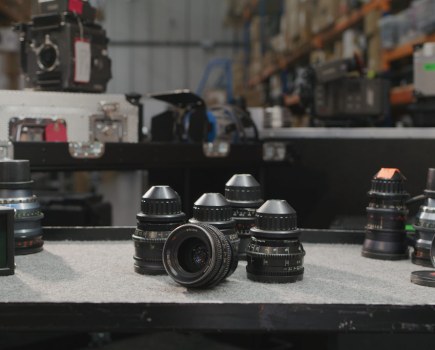Page 1 Video key to Kodak future
EXCLUSIVE INTERVIEW
As world leaders meet in London to tackle the global financial crisis, camera maker Eastman Kodak reveals its blueprint for beating the consumer downturn

Kodak is drawing up plans to develop ‘smaller’ digital compact cameras and sees ‘easy-to-use’ video as an increasingly vital selling point as the economic crisis threatens to dampen sales.
Jerry Magee, Eastman Kodak’s marketing manager for Future Product Development of Z-series digital compacts, told Amateur Photographer: ‘The innovation and the ability to go to YouTube is huge. It has absolutely mesmerised me how easy it is for video to be shared. Two years ago it was just about impossible.’
Magee predicts that compact cameras with video capture will be key to future sales as the world financial crisis takes its toll and compact sales peak.
Asked whether the economic situation will result in fewer Kodak cameras Magee replied: ‘It would be foolish not to be observant and not change to meet the times.’
He added: ‘But the industry is consolidating, and I think you are seeing the number of announcements from companies consolidating… just because we have to? At the same time that’s why we have gone to video.’
Magee sees the potential to share video images, via social networking websites, as ‘equal to still [image] sharing’.
Though he admits that observers may notice a fall-off in new product announcements, he confirmed that Kodak will announce new cameras in the summer, for market launch this autumn. ‘We are still marching ahead.’
Magee sees the brand’s ‘number one’ market share in the US as indicative of the type of cameras it makes, ‘sold in channels that are not consumer high-end’.
No plans to re-enter DSLR race
But the firm has ruled out re-entering the digital SLR market, sales of which continue to grow worldwide.
Neither does Kodak plan to join the emerging market for interchangeable lens compact cameras, which it does not see as a threat to sales of traditional fixed-lens compacts.
Kodak’s philosophy appears to be at odds with camera firms such as Olympus, Panasonic and Samsung which see smaller, detachable lens, cameras as potentially the next big thing.
‘We are going [to be] a little different,’ said Magee who used to head up Kodak’s DSLR marketing machine in the 1990s. He stressed that Kodak plans to focus on ‘smaller, higher-zoom or video-based’ compacts.
He told AP: ‘I feel there is a lot of risk in companies introducing new lens formats? Those companies that sit on both sides of the fence are spending money trying to be on both sides. We are saying that our space is consumer photography – trying to give them the best cameras for the value that they can have.’
Kodak’s sights are firmly set on fixed lens compacts. ‘Removable lenses are too complicated for what Kodak is falling into as a space for photographers. We make our bread and butter with easy-use, great image quality, feature-rich, value-added cameras.’
Page 2 Megapixel race not over yet
Not the end of megapixel ‘war’
Higher pixel counts will also remain part of the sales pitch. Though Magee (pictured below) suggested that Kodak will not give up the race for megapixels anytime soon, he admitted that, in technical terms, there is a limit to the value of pushing up the pixel count. ‘We are guilty as charged in playing in the megapixel war and the only reason we are is that retailers want it and so do consumers,’ he said.
‘We are more a victim of what the customer wants? megapixels are not a good thing to a technologist but to the lady next door who wants to buy a camera, and she sees one with 10MP and one with 14MP, you know what she is going to buy.’
Magee hinted that the resolution of Kodak’s future cameras may soon exceed 14-million-pixels with the firm switching from CCD to CMOS imaging sensors for cameras incorporating ‘HD’ movies.
? Kodak spells out why it will not be making any more DSLRs in a separate version of this article which will appear in an upcoming issue of the printed magazine








